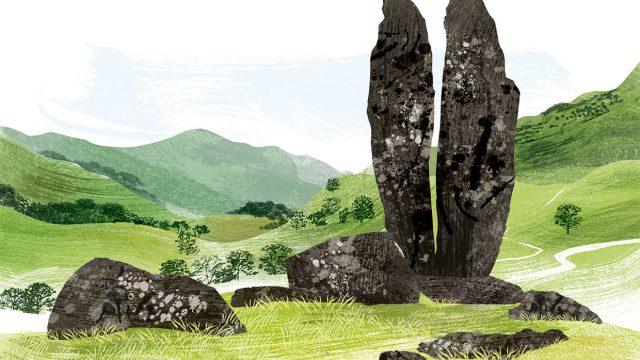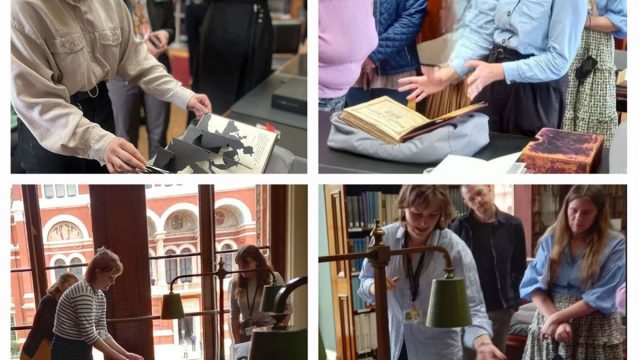Last year Finland celebrated 100 years of independence. Despite its youthfulness, there is a lot we could learn from this new country with many indices citing it as ‘the most stable, the safest and the best-governed country in the world’.[i] Its current standing is a marked departure to its early years, in which its citizens faced stark economic conditions as a result of famine in the 1860s, slow industrial growth at the start of the 19th century, and large war debts in the aftermath of the Second World War as the country worked to pay back reparations to Russia. Against the sombre postwar backdrop of limited resources, the boldness of Marimekko’s prints must have appeared even more vivid and surprising than they do today.
Marimekko was founded in 1951 in Helsinki by the trained textile artist, Armi Ratia (1912-1979). Ratia became not only the managing and creative director but also the company’s driving force and figure head. She was responsible for identifying and engaged promising young artists to create striking new fabric prints:
Using contacts from her art school, she set about recruiting a group of young women who would challenge the unimaginative floral prints churned out by competitors, and even the lines from big fashion houses such as Chanel and Dior.[ii]
Under Ratia, a talented group of designers created a “brand-new style of textiles for clothes and interiors”. Designers such as Maija Isola (1927-2001), Katsuji Wakisaka (b.1944) and Vuokko Eskolin-Nurmesniemi (b.1930) are credited with creating “a new form of Finnish folk tradition” fusing modernist geometric shapes with abstracted natural forms. They built on Finland’s long history of bold textile design, which produced the traditional long-tufted tapestry or knotted-pile carpet hangings (ryijys) which feature ‘powerful extravagance of color sic and form’.[iii] The company’s dynamic designs attracted international followers as well as high-profile patrons, such as Jackie Kennedy.
[The company] had such an incredible effect on foreign buyer who came in droves to Finland in the early sixties in search of something new.[iv]
Marimekko designs were playful, liberating and easily adaptable into children’s clothes. A good example of this is the multi-pocketed, A-line dress, Iloinen takki, ca. 1960, designed by Vuokko Nurmesniemi (see fig. 1). 58 years since it was first released, this Marimekko dress continues to be produced for and be popular with adults and children alike.

Marimekko’s designs for children were strikingly different to clothing worn at the time. Gone were the layers of starched petticoats, chemises, stiff woollen jumpers and the wartime ethos of ‘make do and mend’. Marimekko’s children’s clothes ushered in a new era of bold, bright and abstracted forms, made from lighter, stretcher materials. Marimekko’s classic, Even Stripe (Tasaraita), ca. 1968 by textile designer, Annika Rimala (1936-2014), was made from a soft cotton jersey and was designed for every ‘age, sex or size’.[v] The clothing’s easy fit and flexible material meant that children were not reliant on adults to dress them as these items could be easily pulled on or off by the child them self. Even Stripe was not the first unisex item designed by Marimekko, the first being the Every Boy shirt (Jokapoika) in the striped Piccolo pattern designed in 1953 by Vuokko Eskolin-Nurmesniemi, but the versatile Even Stripe design helped establish the brand as one which has universal and enduring appeal.
To see many of the original Marimekko designs mentioned in this piece, please visit the Century of the Child: Nordic Design for Children 1900 to Today exhibition at the V&A Museum of Childhood, Bethnal Green, from 30 March to 2 September 2018. Free entry.
[i] J Henley, ‘Safe, happy and free: does Finland have all the answers?’ in The Guardian https://www.theguardian.com/world/2018/feb/12/safe-happy-and-free-does-finland-have-all-the-answers, accessed on 16/02/2018
[ii] S. Raikes, ‘Brave new whorls’ in Scotland on Sunday (4th September 2005)
[iii] Ulf Hård af Segerstad, ‘Unity and diversity in Scandinavian design’ in Scandinavian Modern Design 1880-1980 (ed) David Revere (New York: Abrams, 1982) p.44
[iv] J. Donner, ‘Dreams and Reality’ in Phenomenon Marimekko. H. Rahikainen-Haapman, E. Kaarakka & MT. Vuorimaa(eds) (Kiviranta: Marimekko Oy: 1986). p.9
[v] Marianne Aav, Marimekko: Fabrics, Fashion, Architecture https://books.google.co.uk/books?id=tc-zFY1RISwC&pg=PA299&dq=marimekko+children’s+clothes&hl=en&sa=X&ved=0ahUKEwjamaCEibLZAhWMK1AKHUAMB70Q6AEIKjAA#v=onepage&q=marimekko%20children’s%20clothes&f=false, accessed on 19/02/2018


